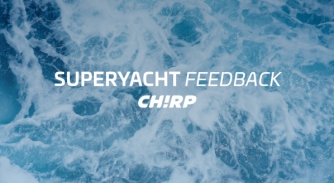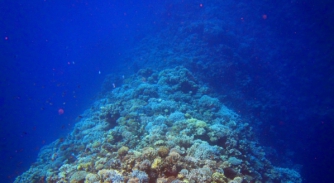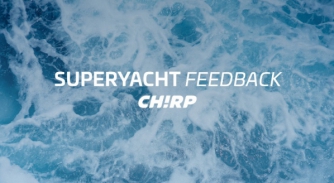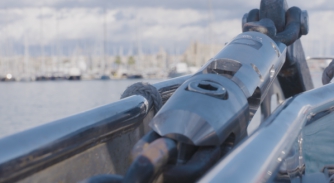CHIRP Report: Tender grounding
A sunset cruise and pressure to impress the guests leads to a tender being left high and dry in French Polynesia…

The following case study is from Superyacht Feedback, from CHIRP Maritime, the first superyacht-specific programme and publication dedicated to improving safety in the maritime industry through vital knowledge sharing, anonymous reporting, analysis and feedback via the Superyacht Maritime Advisory Board.
A full selection of case studies and a feature covering this new programme appears in The Superyacht Operations Report.
Tender Grounding
Initial Report
“I was asked to take guests on a sunset cruise on a jet drive tender around the island in the South Pacific. I warned the captain that multiple shallow spots on the main yacht’s ECDIS were not shown on the Tenders. I was told to try, so we set off but halfway around the island, and as the sun went down, it became harder to see the unlit posts, which indicated the safe routes around the reef.
I decided to turn around, and on the return trip, we missed one post, and the tender went aground on a reef and could not refloat as the tender as the tide was dropping. We had no radio or phone signal, but a passing local fisher gave us a lift back to the yacht, and we returned with the fisher on the high tide that night to recover the tender.”
CHIRP Comment
The captain intentionally deviated from safety procedures in directing the tender trip to go ahead despite knowing that the charts were inadequate for safe navigation, particularly at night. This placed the reporter in a difficult ‘no win’ position: either to disobey their captain or undertake a trip against the rules of good seamanship. The reporter did challenge the captain, but the captain prioritised the guests’ wishes ahead of theirs and the crew’s safety which suggests a poor safety culture on board.
It also means poor planning – had the trip been organised more thoroughly in advance, the inadequacy of the charts would have become known sooner, and an alternative route away from the reefs might have been possible, or the course reconnoitred by day and saved into the tender’s ECDIS. The Master’s standing orders should state that no tender should leave the mother ship without adequate communications equipment.
Similarly, a comprehensive risk assessment would have identified that VHF coverage would have been inadequate once out of sight of the parent vessel. A patchy phone signal should always be expected in remote areas.
Key Issues Relating to this Report
Culture: The captain’s order to launch with inadequate charts was a safety violation.
Pressure: the authority gradient between the captain and reporter meant that the latter probably couldn’t refuse the order. Putting guests’ wishes before their safety indicates that the captain had not developed a good working relationship with the guests. A formal brief upon their arrival that “safety supersedes everything else” would have prevented the captain from putting themself under pressure to accede to the guests’ wishes.
Teamwork/Planning: a thorough risk assessment, a better route choice, or a prior recce would all have prevented this incident.
Communications: When working remotely, assume that communications will be difficult. Does your vessel have a ‘tender overdue’ procedure? A tracking device fitted on the tender should be considered.
CHIRP Maritime, a UK-registered charity, has launched Superyacht Feedback, the first superyacht-specific programme and publication to improve safety in the maritime industry through confidential reporting and safety analysis onboard. To register, or submit your feedback, please click here.
NEW: Sign up for SuperyachtNewsweek!
Get the latest weekly news, in-depth reports, intelligence, and strategic insights, delivered directly from The Superyacht Group's editors and market analysts.
Stay at the forefront of the superyacht industry with SuperyachtNewsweek
Click here to become part of The Superyacht Group community, and join us in our mission to make this industry accessible to all, and prosperous for the long-term. We are offering access to the superyacht industry’s most comprehensive and longstanding archive of business-critical information, as well as a comprehensive, real-time superyacht fleet database, for just £10 per month, because we are One Industry with One Mission. Sign up here.
Related news
.jpeg)
CHIRP Report: Pressurised to make a fatal decision
A tragic outcome that stemmed from an all too common set of occurrences in the superyacht industry
Crew

CHIRP report: Near miss approaching port
This case study examines how a dangerous approach speed and distractions on the bridge nearly led to a grounding
Crew

Analysis: The blindspot
Despite the forward-looking sonar technology coming a long way, uptake has been relatively slow across the broader market
Technology

Introducing: Superyacht Feedback
CHIRP Maritime aims to elevate safety standards via the industry-specific Superyacht Feedback publication
Crew

Shifting anchoring from reactive to proactive
AnchorGuardian from Swiss Ocean Tech hopes to revolutionise environmentally conscious safe anchoring practices…
Crew
Related news
CHIRP report: Near miss approaching port
3 years ago
Analysis: The blindspot
3 years ago
Introducing: Superyacht Feedback
3 years ago
Shifting anchoring from reactive to proactive
3 years ago
NEW: Sign up for
SuperyachtNewsweek!
Get the latest weekly news, in-depth reports, intelligence, and strategic insights, delivered directly from The Superyacht Group's editors and market analysts.
Stay at the forefront of the superyacht industry with SuperyachtNewsweek



